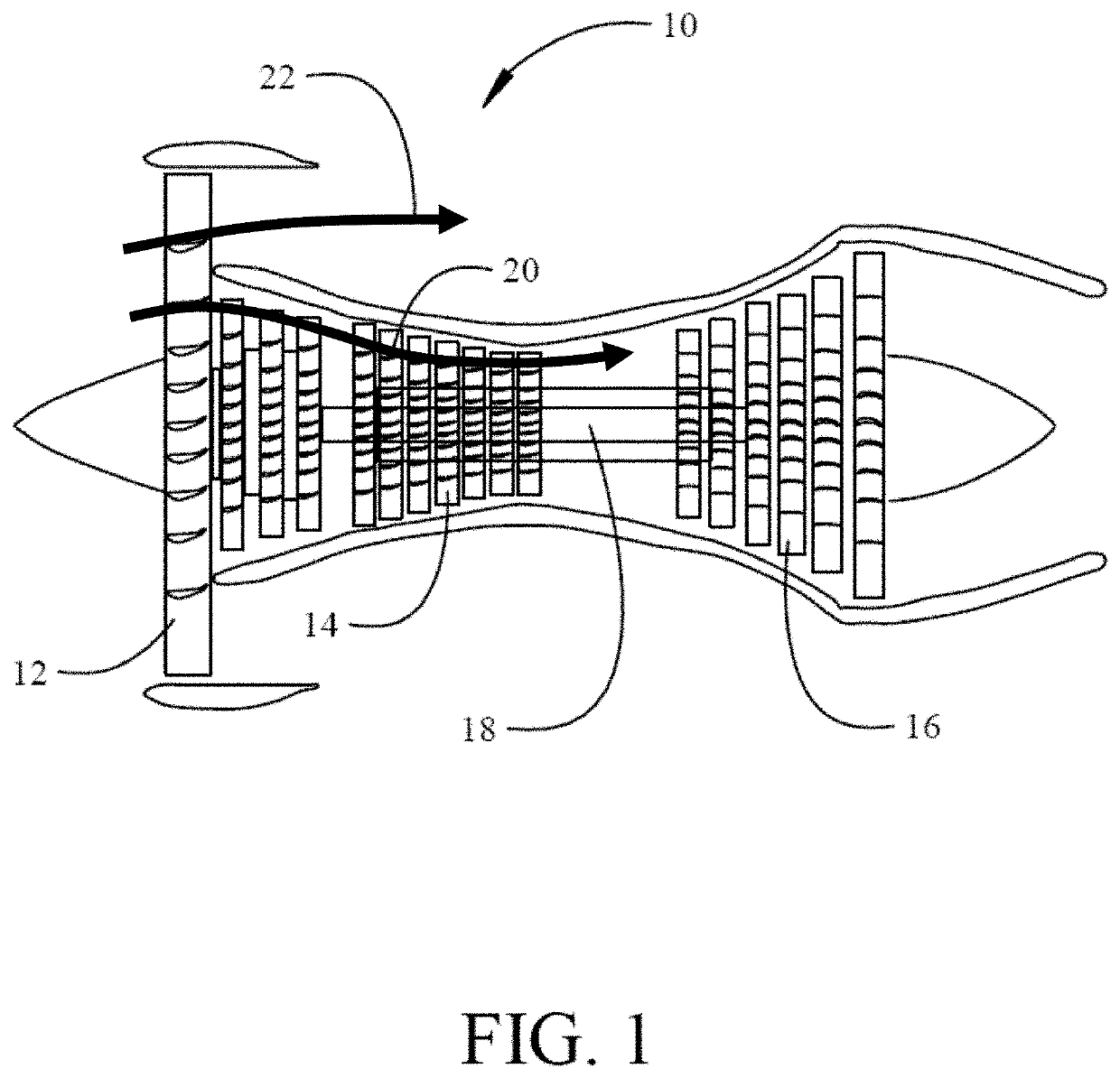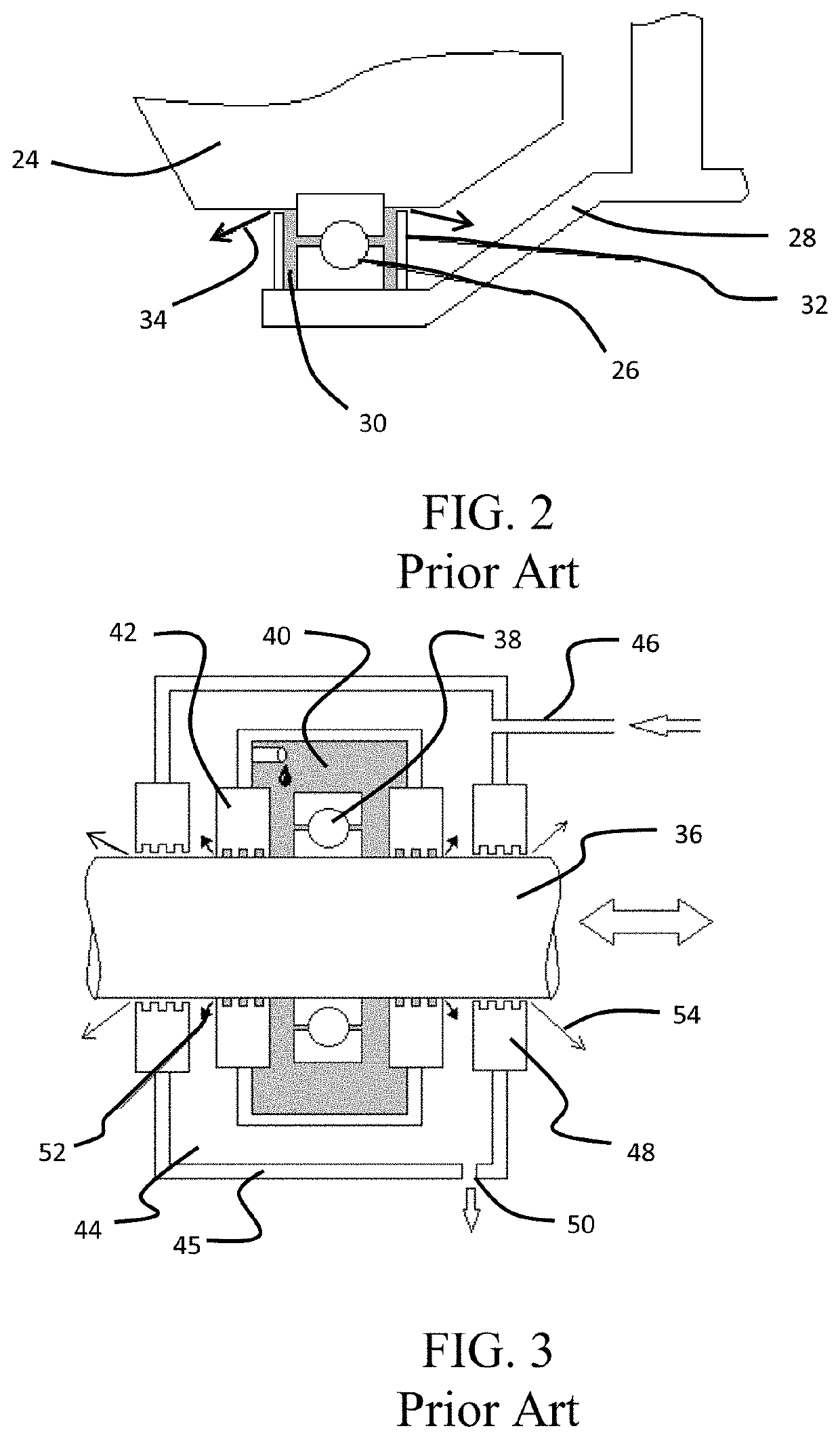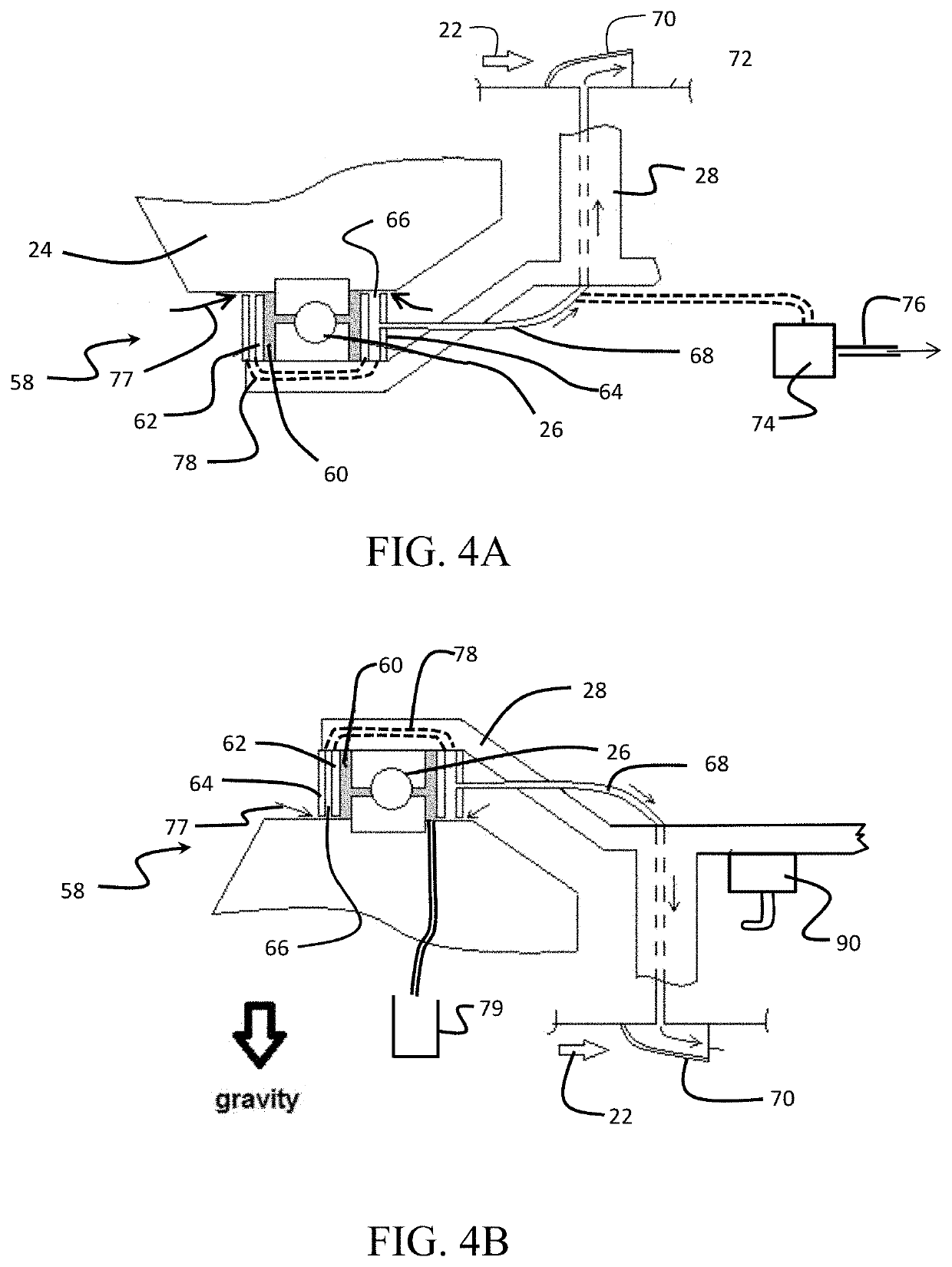Seal assembly and method for reducing aircraft engine oil leakage
a technology of aircraft engine and seal, which is applied in the direction of liquid fuel engines, machines/engines, mechanical equipment, etc., can solve the problems of seal leakage and aerosolization of oil, and achieve the effect of reducing oil leakag
- Summary
- Abstract
- Description
- Claims
- Application Information
AI Technical Summary
Benefits of technology
Problems solved by technology
Method used
Image
Examples
Embodiment Construction
[0013]The embodiments and methods described herein provide a dual labyrinth seal assembly for a gas turbine engine. The first seal defines an inner cavity that surrounds a bearing such as the forward compressor bearing. A second seal defines an outer cavity that surrounds the inner cavity. In operation, any oil leakage that occurs as a result of leakage around the first labyrinth seal is transmitted into the cavity defined by the second labyrinth seal. A vacuum system creates a vacuum within the second cavity such that any oil that is within the second cavity is extracted and then sent overboard via the fan airstream. The vacuum system includes connection to the outer cavity in a first embodiment with an evacuation tube or channel that is formed integrally with or integrated into static structural elements of the engine such as the front compressor frame for the exemplary compressor bearing. The vacuum system also includes low pressure sink such as a scupper connected to the evacuat...
PUM
 Login to View More
Login to View More Abstract
Description
Claims
Application Information
 Login to View More
Login to View More - R&D
- Intellectual Property
- Life Sciences
- Materials
- Tech Scout
- Unparalleled Data Quality
- Higher Quality Content
- 60% Fewer Hallucinations
Browse by: Latest US Patents, China's latest patents, Technical Efficacy Thesaurus, Application Domain, Technology Topic, Popular Technical Reports.
© 2025 PatSnap. All rights reserved.Legal|Privacy policy|Modern Slavery Act Transparency Statement|Sitemap|About US| Contact US: help@patsnap.com



